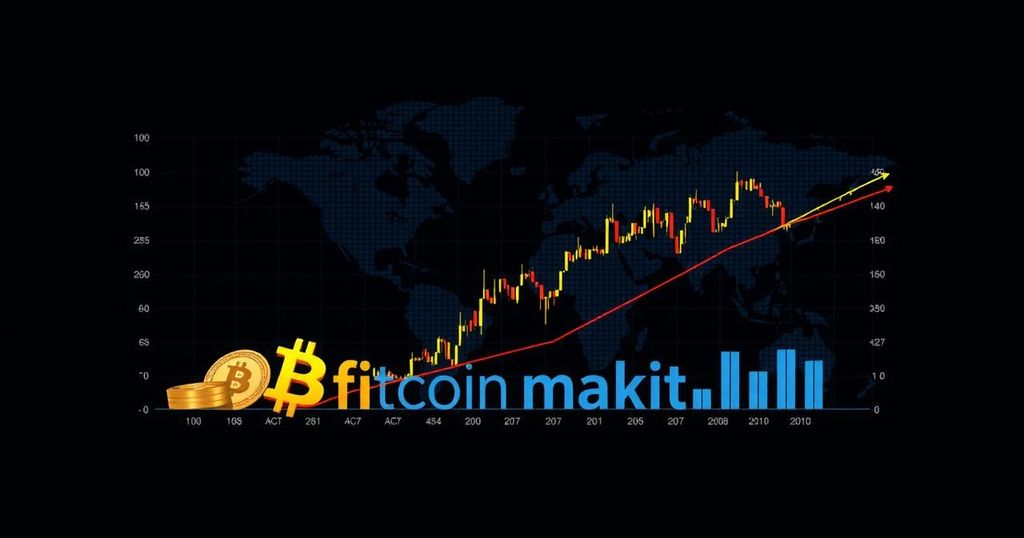Assessing Bitcoin’s Future: The Implications of Federal Reserve Rate Cuts
**The Future of Bitcoin in the Wake of Federal Reserve Rate Adjustments: Assessing the Possibility of a 20% Decline Versus a Buying Opportunity**
As the cryptocurrency market continues to encounter fluctuations, Bitcoin (BTC) remains in the spotlight, particularly regarding its potential responses to forthcoming economic decisions. Analysts at Bitfinex have indicated that Bitcoin may experience pronounced volatility following the Federal Reserve’s anticipated rate cuts in September 2024. The magnitude of these cuts, coupled with the surrounding economic context, will determine whether Bitcoin’s price sees a significant decline or may present a potential buying opportunity for discerning investors. The present discussion intends to explore the possible scenarios for Bitcoin, the underlying economic dynamics at play, and the strategic opportunities that may arise for investors.
**Understanding the Influence of Federal Reserve Rate Cuts on Bitcoin**
Decisions made by the Federal Reserve regarding interest rates are closely scrutinized by investors; however, their effect on risk assets such as Bitcoin can be particularly notable. Generally, a rate cut is perceived as a positive indicator for the markets as it suggests that borrowing costs will reduce, potentially invigorating economic activity. Yet, the interpretation of such cuts—whether they stem from economic strength or weakness—can considerably sway market reactions.
**The Bearish Outlook: A Potential 20% Reduction in Bitcoin’s Value**
Bitfinex analysts have articulated a bearish perspective whereby Bitcoin might experience a decline of 15% to 20% subsequent to a rate cut. This outcome is probable if a substantial reduction, such as 50 basis points, accompanies growing recession concerns. Such a substantial adjustment could convey worries regarding the economy’s fragility, prompting market participants to divest from risk assets, including Bitcoin. In this potential scenario, Bitcoin could trade within the range of $40,000 to $50,000, driven by panic selling and diminished risk appetites from investors retreating to safer havens, such as cash and government bonds.
**The Bullish Perspective: A Strategic Buying Opportunity in a Traditionally Weak Month**
Conversely, should the Federal Reserve implement a more modest 25 basis point reduction, this might create a buying opportunity for Bitcoin. Historically, smaller rate reductions have been viewed as the commencement of an easing cycle, fostering long-term price increases as economic fears dissipate. Should the Federal Reserve adopt a 25 basis point reduction, it could signify confidence in the resilience of the economy, thereby lessening the chances of a severe recession.
Crypto analytics firm K33 Research corroborates this perspective, stating that the timeframe following September may be particularly advantageous for Bitcoin investors. Typically, the period from October to April has yielded remarkable returns for Bitcoin, as evidenced by an investor purchasing Bitcoin at the beginning of October and selling at the conclusion of April realizing returns exceeding 1,449% since 2019.
**Seasonal Trends and Their Effects on Bitcoin Prices**
September has historically been one of the weakest months for Bitcoin and the cryptocurrency sector as a whole. This trend often stems from lower trading volumes and increased market uncertainty, leading to price declines. Nonetheless, astute investors tend to view these dips as opportunities to enhance their exposure in anticipation of stronger subsequent months.
**Strategically Buying the Dip: An Approach for Q4**
According to Vetle Lunde, senior research analyst at K33, the strategy of “buying blood in September” to prepare for a more favorable Q4 has consistently been one of the most effective techniques for Bitcoin traders. With the expectation of improved market conditions post-September, numerous investors are positioning themselves to leverage potential price escalations later in the year.
**External Elements Influencing Bitcoin’s Pricing**
While the Federal Reserve’s decisions are significant, various external factors could also influence Bitcoin’s pricing trajectory in the upcoming months.
**Government Sell-Offs and Market Redistribution**
One optimistic factor for Bitcoin’s performance toward year-end is the diminishing large-scale selling pressures from government entities and the Mt. Gox situation. Earlier this year, substantial amounts of Bitcoin were sold by government entities, resulting in downward pressure on prices. However, these sell-offs have largely concluded, creating a more stable market environment. Additionally, the redistribution of approximately $14.5 billion to FTX creditors later this year is expected; bullish investors anticipate that a portion of these funds could reinvest in the cryptocurrency market, potentially driving prices upward.
**Economic Uncertainty and Investor Psychology**
Investor sentiment in light of economic uncertainty is another essential factor. If economic indicators continue to exhibit signs of weakness, investors may gravitate toward safe-haven assets such as gold or governmental bonds. Conversely, if economic resilience is demonstrated, there may be an increased appetite for risk, benefiting Bitcoin and other cryptocurrencies.
**Technical Analysis: Crucial Levels to Monitor for Bitcoin**
From a technical analysis standpoint, Bitcoin traders are analyzing key support and resistance levels closely. The $40,000 threshold has emerged as a vital support level should a downturn occur. Should Bitcoin breach this critical level, it may signal further declines, instigating additional selling pressure. Conversely, a sustained movement past the $50,000 level could indicate renewed bullish sentiment. Technical indicators, encompassing moving averages and the Relative Strength Index (RSI), will be critical in discerning potential entry and exit points for traders.
**The Broader Cryptocurrency Market Perspective**
The performance of Bitcoin frequently serves as an indicator for the entire cryptocurrency market. Movement in Bitcoin often correlates with other digital assets. For instance, Ethereum (ETH) likely mirrors Bitcoin’s trajectory, particularly given its recent strong correlation.
**Implications for Altcoin Performance**
For other altcoins, including Ethereum, Solana (SOL), and Cardano (ADA), Federal Reserve decisions and subsequent fluctuations in Bitcoin’s price are of paramount importance. Significant volatility in Bitcoin may result in even more pronounced price swings among altcoins, presenting both risks and opportunities for traders.
**The Role of Institutional Investors**
Institutional investors are increasingly becoming influential players within the cryptocurrency market. Their reactions to economic data and Federal Reserve actions can offer valuable insights into market direction. Should institutions perceive Bitcoin as a hedge against traditional market volatility, their heightened engagement may contribute to price stabilization.
**Preparing for Market Volatility: Strategies for Cryptocurrency Investors**
Given the potential for considerable volatility in the upcoming weeks, investors should contemplate multiple strategies to safeguard their portfolios and capitalize on market movements.
**Diversification and Risk Management**
A fundamental strategy involves diversification. By maintaining a diversified asset portfolio—including stablecoins, Bitcoin, and an assortment of altcoins—investors can mitigate risk while participating in potential market upswings. Introducing stop-loss orders may further offer protection against abrupt market declines.
**Staying Informed and Adjusting to Market Trends**
Keeping abreast of economic indicators and market conditions is vital for any serious investor. By remaining informed about Federal Reserve announcements, macroeconomic developments, and market sentiment, investors can make well-informed decisions and adapt their strategies accordingly.
**Conclusion: Navigating Uncertainty with a Strategic Approach**
The forthcoming months present both challenges and opportunities for Bitcoin investors. Although the Federal Reserve’s rate cuts may induce significant volatility, they simultaneously offer prospective buying opportunities for prepared individuals. By comprehending the various factors influencing the market—from economic data and seasonal trends to technical analysis—investors can strategically navigate uncertainty and potentially capitalize on market movements.
**Join the Discussion**
What are your forecasts concerning Bitcoin’s performance in the following months? Do you perceive a buying opportunity amidst the potential downturn, or are you bracing for further volatility? Kindly share your insights in the comments below and engage in the discourse regarding the future of cryptocurrency.







Post Comment